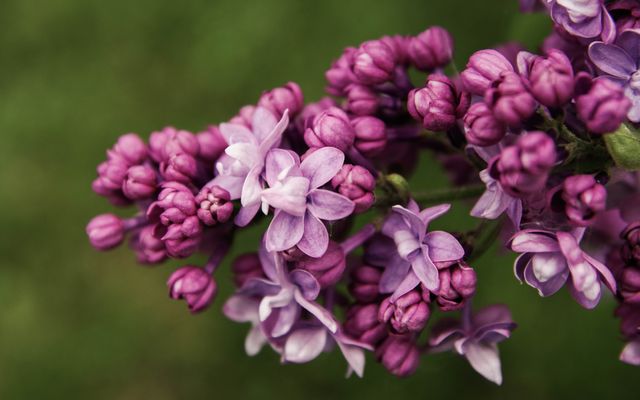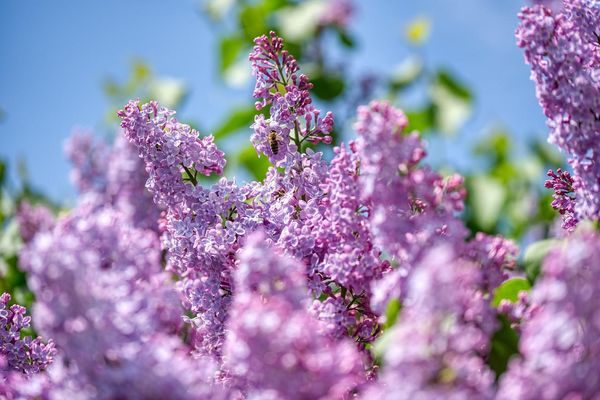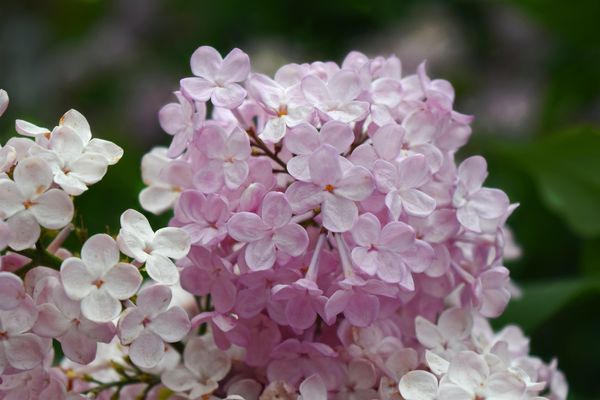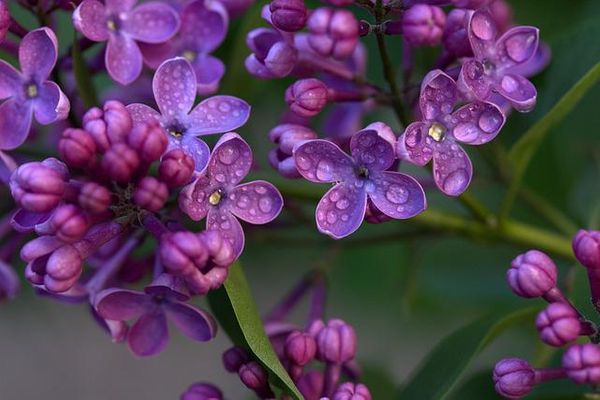Lilac bushes or shrubs! A beautiful, carefree spring-flowering shrub that can add beauty to your landscape and provide a sweet, haunting fragrance, too.
Do you know that 2022 is the “Year of the Lilac,” as per the National Gardening Bureau? This beautiful shrub received this distinction as lilacs are among the most carefree spring-flowering, multi-stemmed shrubs, well-loved for their toughness, reliability, and fragrance.
So don’t you want to bring this flowering shrub to your home? Do you want to add beauty to your garden and enrich it with sweet fragrances? But are you worried about its growing and caring guide?
Don’t worry. Let’s dive into the article below to resolve all your queries.
Plant Overview

The common lilac or scientifically named as the Syringa vulgaris is a well-loved plant by all gardeners for its toughness, reliability, and fragrance. In fact, lilacs are very tough that they can survive and grow for more than 100 years, often outliving the homes they were planted around.
This small tree has about 10 canes and produces flowers at the level of the eye. The common lilac attains a height between 8 and 12 feet tall, depending on its variety. The fragrance of flowers attracts butterflies to itself and gives a beautiful look to the garden along with helping in pollination.
The blossoms of the lilacs are usually lilac or purple in color from very pale to very dark. There are also certain varieties available that showcase their beauty in the shades of white and cream and even pink and yellow. This plant possesses individual flowers that can be single or double.
Varieties of lilacs to grow

There are a lot of varieties of lilacs that can be found on the earth. But the most popular ones include
Wedgewood Blue
Wedgewood Blue is a compact lilac variety that attains a height at maturity of only 6 feet with a spread equal to that. The flowers of this variety are contained in thick clusters in the shades of lavender blue. This plant thrives in zones 3 through 8.
Yankee Doodle
Yanke doodle is the small lilac bush that showcases deep purple, fragrant blooms. This variety is a bit more cold-hardy than the main species that are suitable for the hardiness zones of 2 through 8. It grows up to 6 to 10 feet tall and 5 to 6 feet wide.
Belle de Nancy
Bella de Nancy is a popular variety of lilacs that has double pink flowers with multiple layers of petals that grows up to the height of 8 to 10 feet tall and 6 to 8 feet wide. This variety starts blooming in late spring to early summer and is suitable for the hardiness zones 3 through 9.
Madame Lemoine
Showcasing the bright shades of white double flowers, this lilac variety stands tall up to 15 feet high and 12 feet wide. This variety of lilac is suitable for the hardiness zones 3 through 8.
Primrose
Primrose is a standard-size variant of lilac that grows 10 to 15 feet tall and 6 to 10 feet wide. It is noticeable and recognized for its yellow flowers that deliver the beloved sweet lilac fragrance. This variety is suitable for hardiness zones 3 through 7.
How to plant lilac?

Like most shrubs, lilacs are recommended to plant in either spring or fall, although you can plant them later.
When it comes to growing lilacs, you can grow them from a sucker, or offshoot, of the root system of one of their parent plants. The sucker will look pathetic at first glance, but you just need to dig a hole, fill it with soil, and stick the sucker in it. Then just water your plant and wait.
It will take a long time to grow flowers. So in 4 or 5 years, you’ll be rewarded with huge, fragrant blossoms.
If you don’t want to wait for a longer time, you can buy lilacs from the nursery and transplant them very easily. If your nursery-bought lilacs are container-grown, then you need to spread out the roots when you settle the plant into the ground.
If your plant is balled or burlapped, then gently remove the covering and any rope before plantation. Set the plant 2 or 3 inches deeper in the soil than it grew in the nursery, and work topsoil around the roots. Water your plant profusely. Then fill it with more topsoil.
After successful plantation of lilac, it is recommended to apply a layer of compost in each spring under the plant, followed by mulch to retain moisture and control weeds.
How to care for lilacs?

As we know lilacs are the most carefree plants, they don’t require a lot of care and attention. But providing a little care can reward you with abundant flowers. Once the plant is established, it requires little attention to provide a memorable annual spring show of scented blooms.
Following is the caring guide of lilac.
Soil
Lilac bushes thrive well in rich, loamy soil with a sharp drainage system. They can also tolerate clay soil, but it might stunt their growth.
Lilacs prefer to grow in soils with pH ranging from neutral to alkaline. So before planting your plant, it is recommended to determine the pH of the soil with a soil test so you don’t need to take attempt to adjust it. If your soil tends to be acidic, you just need to add some lime for lilacs to thrive.
Light
Lilacs require heavy sunlight. It rarely blooms flowers in shade. Although it can tolerate some shade, too little light can limit the blooms of the plant.
so it is recommended to place your plant in an area that is sunny and gets direct sunlight for at least six hours a day.
Temperature
Lilacs bushes prefer to grow in climates that have fairly cool summers. So it is not the plant to grow in hot, humid areas, such as the Southern United States. High humidity and warmer temperature can lead to fungal diseases in the plant.
Moreover, they can tolerate temperatures well below freezing, although they prefer protection from bitter cold winds, which can damage their flower buds and break stems.
lilacs generally thrive in the USDA Hardiness Zones 3 through 7. In warmer climates, they are unable to get enough winter chill to set flower buds.
So if you live in USDA Hardiness Zones 8 or warmer, have a check in the local garden center if they have lilac varieties specifically bred for your area.
Watering
Lilacs like to grow in a moderate amount of soil moisture. But watering too much can make the soil soggy and it can lead to root rot and poor blooming. So while watering your young lilacs make sure to keep the soil lightly moist. Mature plants typically will only need watering during periods of drought and can grow carefree the rest of the time.
If you are planting your lilac in the spring, keep it well-watered and water regularly through the growing season. During the days, when there is no or little rain, water your plant deeply once a week during that first season until fall when the leaves of it start dropping and the nights are cooler. After the fall has passed, you can stop watering.
If you are planting your lilac in late fall, keep it well-watered until the ground freezes. After the completion of the first year, most lilacs can survive any normally dry periods of the summer with no additional watering.
Fertilizer
In most places, lilacs won’t need any additional fertilizer, especially if you are growing them near a regularly fertilized lawn. But you can fertilize the plant for better growth. Your plant can get benefits from spring feeding and soil amendments, especially if you have poor soil.
So If you choose to fertilize your lilac, choose a fertilizer that has low nitrogen content. Apply the fertilizer in early spring before the leaves start to come out, or right after flowering.
Concluding thoughts

If you are planning to grow shrubs in your garden in spring, Lilacs are the perfect choice for you. It is one of the most cherished and adored of all flowering shrubs.
The fresh fragrance of these beautiful flowers in your garden will help you relives the stress and shows you the welcome sign that summer is on the way.
So let’s have a lilac plant in your garden this spring and enjoy the purple beauty and sweet fragrance of it.
You may also like to read
How to grow a Fuchsia plant- A step by step guide
How to grow Chinese Fringe Flowers in your Garden?- Everything you need to know






